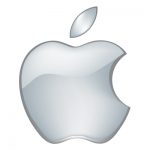I have to back-pedal a little on those results.
Unfortunately, while the adapter works better with the new firmware, there are still problems. This morning, it started up okay (from the “startx” command — I don’t generally use DMs), but X seemed to take an unusually long time to start. I also noticed that while the monitor responded to the 4K/60Hz mode within X, it didn’t respond to the 4K console mode before starting X (it works fine using the monitors DP input).
Then, I tried unplugging it and plugging it back in, and this time, there was no 4K mode recognized at all, only 2560×1440. Several more unplug-plug cycles resulted in the same thing. Even quitting X back to the console and re-starting X did not work.
So it does occasionally work now, but not reliably. I’m not sure what’s going on. It does seem monitor-dependent, so maybe there are some problems with monitor start-up time or start-up sequence when the monitor detects a signal, and somehow either the DDC or the EDID transfer is occasionally corrupted or not happening properly. The problem *could* be strictly a monitor problem, and not the fault of the adapter, but I don’t have a PC with a native HDMI 2.0 output, so I have no way of seeing if the problem is present without the adapter.
Probably the next step is to try forcing a custom mode. It’s more complicated in Linux (Xorg) than in Mac-OS and it’s been years since I’ve done that so I’ll need to look it up and figure it out, so i might not get to it instantly.



